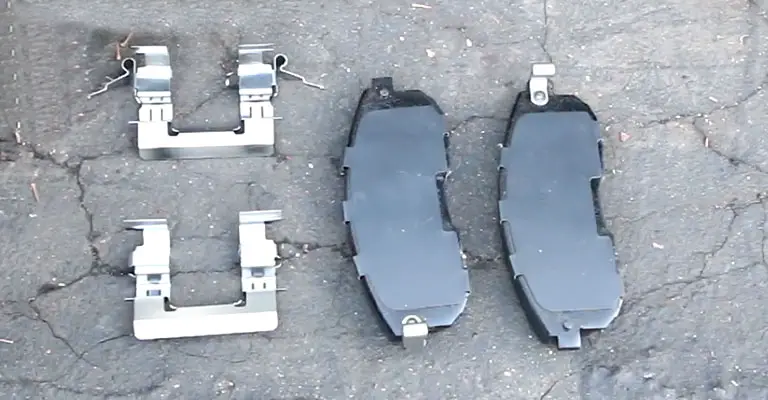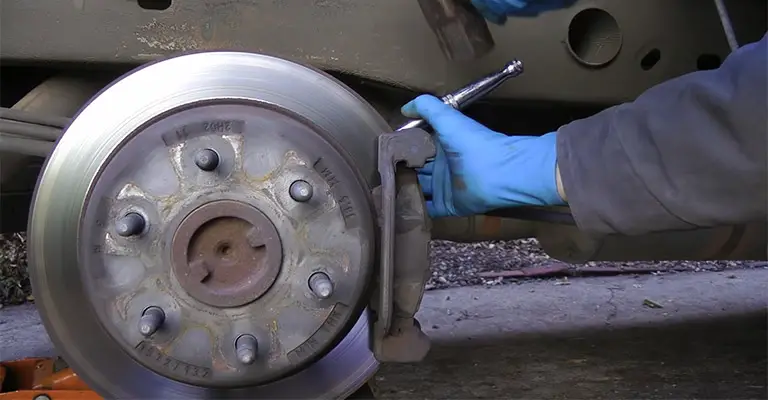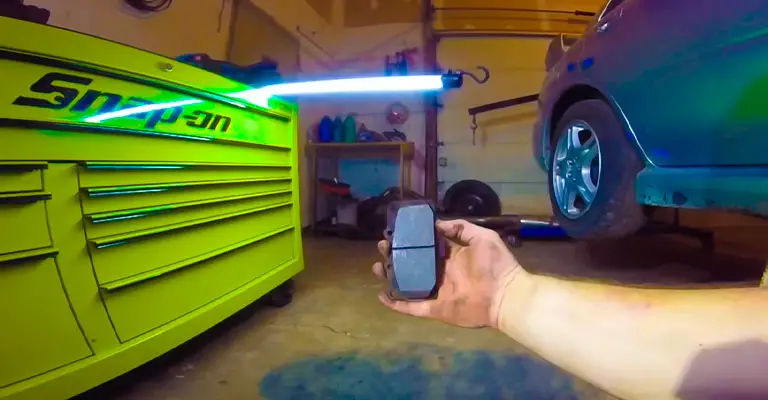You can definitely sand down the brake pads when there is rust, corrosion, less efficacy, or dust materials from roads. And, yes it helps. Sanding the pads helps to expel all these problems as well as the unwanted noise while braking.
Contents
Can You Sand Down Brake pads? Does It Help?
Several benefits can be achieved by sanding down the brake pads. A few of them are given below.

To Save the Brakes from Being Contaminated
The possible reasons for this problem may be the humidity or not using brakes for a long time. The first thing we need to do is to pull the brake pads from your vehicle (check the brake removing process). Then bring sandpaper and rub the pads on that paper (rubbing for nearly 20 seconds or more, you will see a new look on the pads).
Note: Be careful that the sandpaper should be of 150 grit and not too rough.
Eliminating Brake Dusts
The easiest way to fix the dust issue is by polishing it on a sandy surface. Just rubbing in a circular motion for a little time will bring back the previous brand-new look. The more you rub, the more layers of dust will break and come out.
Minimizing High-Pitched Noise
Try a little piece of sandpaper 80, 100, or 150 grit, scruff up lightly. Thus, all the glaze will go out and stop the squealing. You can wipe the pads with alcohol or oil after applying sand.
Increase the Efficiency
While using brake pads for a longer time, the brake materials can be often filled with corrosion, rust, or road contaminants. Sometimes, because of heat, a pad can be worn or damaged.
But when you sand a brake pad, it will make the surface clean by removing excess materials from two to nearly five microinches. Hence, the efficiency of brake power will gradually improve.
Note: While the running time of a brake starts increasing, the percentage of potentiality will decrease gradually. So, using sand can help on a large scale. Using sandpapers doesn’t require a long time to ensure better pedaling, fastest pad seating also.
Problems That Can Occur
Sanding the brakes is ok but do it carefully. Try not to eliminate the metals. Sanding lightly creates no problem but never to heat because it may affect the rotor’s temper. Now let’s see the major problems here.
Uneven Rotor
By removing too much material from the brake pad surface, you will make the rotor uneven and improper for any use.
Loose of Thickness
Sometimes excessive wiping of the brake pad on sandpaper may make a situation that you will lose the actual shape (perfectly round) as well as minimum thickness. Keeping the minimum thickness of the brake pad (set by the manufacturer) is very important. As a result, brake calipers will not create contact with rotors and the car’s braking efficacy.
How to Grind Down Brake Pads
Becoming the pads unfit is an important reason for grinding a brake pad. Read the full process of proper grinding down here.
Take Off the Pad

First, open the tire, get the brake caliper, and then the brake pad. That’s all, no further disassembly is needed.
Use the Sander

Now bring a sander. Carefully sand the front part of the pad (do it slowly). Repeat this until you are sure that the pad can fit the vehicle. Sand one way and then turn 90- degrees and do it the other way.
Note: Always be aware that you are not grinding so much and ruining the full pad. If you have any doubt about grinding, then contact any of the garages. They have the right method and equipment.
Danger of Grinding
There are many chances to make the rotor or caliper damaged if you are not confident to do so. If the pads are largely worn, metals that have come out from the surface will disturb the rotors while braking and make unwanted noise.
New Brake Pads Too Thick for Caliper
Whenever you fit the pads, try to choose the one that can be fitted snugly. Thicker pads make rubbing on rotors. So, follow the tasks to fit your pad.
Grind Down
There is no problem in grinding down new brake pads. If the new pad is very thick for your caliper, the user may clean up the brake pad surface. So, grind down a little and then try to set. Also, you can clean the caliper edges.
Push the Piston
By pushing the piston back, it may fit. Ask for the experts’ help for this step.
FAQ
Can I use rubbing alcohol to clean brake rotors?
Rubbing alcohol or isopropyl alcohol is the finest product to clean disc or brake rotors. After cleaning, the product leaves no remaining. You can also use mild soap and normal water for cleaning.
Whatever you use, be sure that it doesn’t cause contamination. Many people use several brake sprays or cleaners but we think that these are not urgent.
What happens if you put grease on brake pads?
Don’t do this. Pads will not work as they worked before. You will notice the pads wear out so fast and the components face damage.
Can you smooth out a rotor?
Rotors lose smoothness and shine after they face excessive heat, rust, corrosion, or damages due to brake pads. But resurfacing on the rotor surface removes all unwanted materials from the surface and brings its smoothness back.
Is it cheaper to resurface or replace the rotors?
It is quite possible to find brake rotors at a decent price. So, sometimes purchasing a new rotor is cheaper than spending time and money on resurfacing.
Conclusion
In the end, the words we can say that sanding the brake pads when needed brings a good result as long as you are not wasting the minimum thickness, metal surface, and the actual brake pad shape. So, figure out if your pad needs sanding or not, and then do it carefully.
